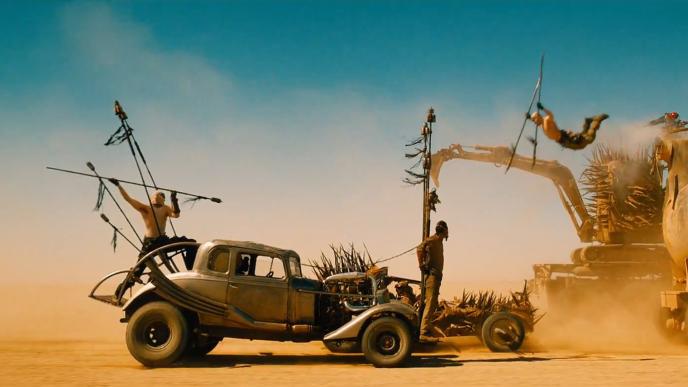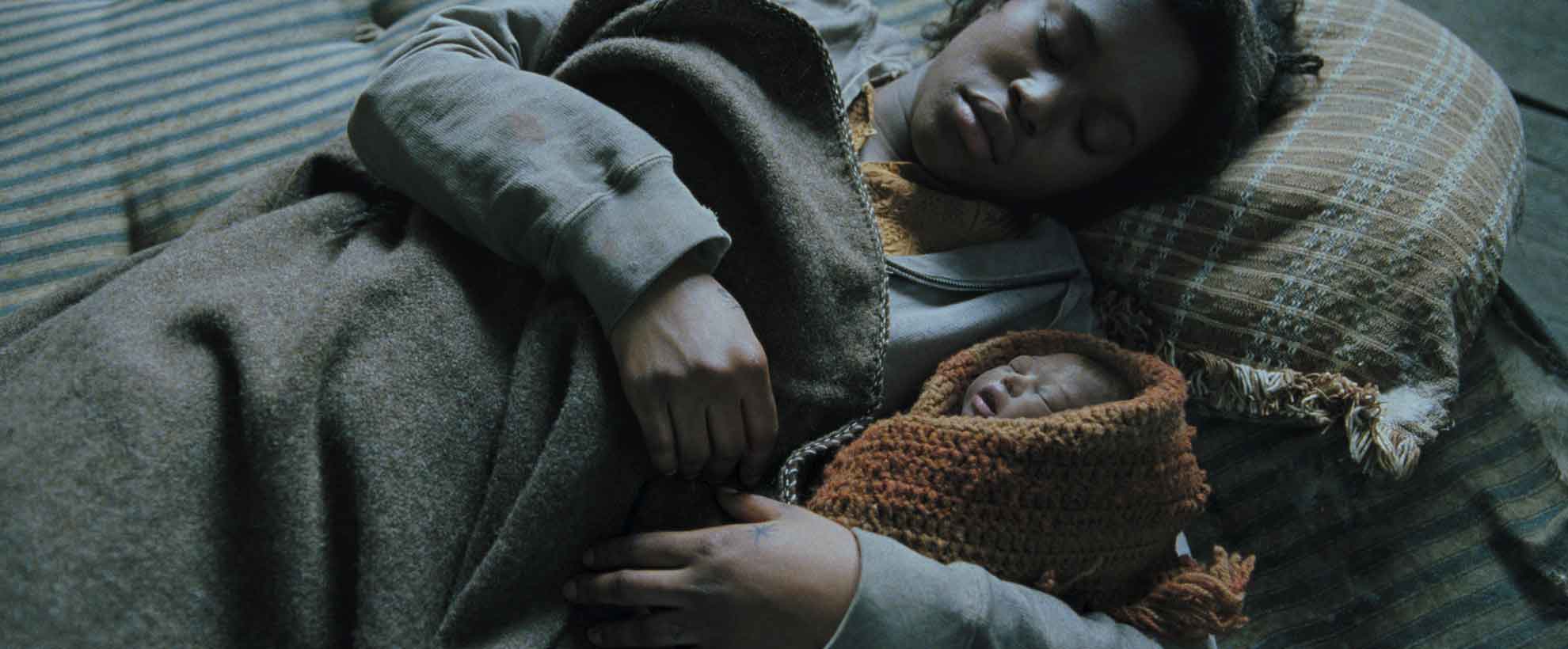
Children of Men
Children of Men, directed by Alfonso Cuarón and starring Clive Owen and Julianne Moore. Based on a novel by P.D. James, the Universal Pictures Production is a dramatic thriller set in the near future. Cuarón approached Framestore to handle the film's most challenging single VFX element - a CG baby, which is first seen actually being delivered.
There's barely a pause for breath ...the film works both as a thriller and as a satisfying political and social drama ...Cuarón and Owen may have created the first believable 21st-century movie hero.
A Difficult Birth
It is 2027, when no child has been born for 18 years and science is at loss to explain the reason. Set in a dystopian England, fractious with violence and warring nationalistic sects, Children of Men follows an unlikely champion of Earth's survival: Theo Faron (Clive Owen), a disillusioned ex-activist turned minor bureaucrat. After the unexpected discovery of Kee (Claire-Hope Ashitey), a lone pregnant woman, Theo is forced to face his own demons and protect the planet's last remaining hope in a desperate journey to deliver her to safety.
A key moment in the plot finds Theo trying to protect the heavily pregnant Kee on their journey to a place of safety. Passing through a strife-ravaged refugee town, Kee finds herself starting to go into labour. The pair take shelter in a bombed out hotel room, shooing out their guide and her dog. Sinking on to a mattress, Kee delivers the baby into the hastily washed, whisky-sterilised hands of Theo, who tenderly passes the newborn to its mother.
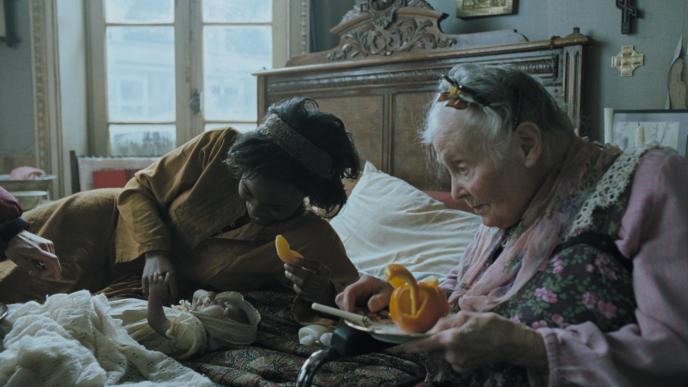
It was a high target, with a kicking and screaming baby. But the reactions we are getting, with even seasoned VFX professionals asking whether the baby is CG or not, suggest that we've hit our target.
No False Moves
Photo-real CG humans are undoubtedly one of the very hardest things to achieve, even after 20 years of ever-increasing computing power and know-how. Starting with dinosaurs, digital artists and technicians have slowly moved up the food chain and, one by one, landmarks have fallen. Insects, reptiles, mammals, fur-bearing creatures, humanoids (such as Gollum) - all have been ticked off the list in the last decade. But the holy grail of human beings that you cannot tell from the real thing has remained elusive. Our perceptions are so finely tuned with regards to our own species that the slightest mistimed movement or miscalibration of skin shade instantly breaks the spell.
Add to this the pressures of introducing a CG baby into a scene which would be shot as an extended, three and a half minute single take, filmed with a hand-held camera, lit by a hand-carried hurricane lamp, with the baby in close up from delivery onwards, and you had one of the most demanding VFX briefs of 2006.
Framestore's VFX Supervisor on the project, Tim Webber, says "Coming as a key plot point of the film, and at this point of heightened emotion, it was critical that the shot felt 100% real. We could not afford for anyone to be taken out of the film at this point. It was a high target, with a kicking and screaming baby. But the reactions we are getting, with even seasoned VFX professionals asking whether the baby is CG or not, suggest that we've hit our target."
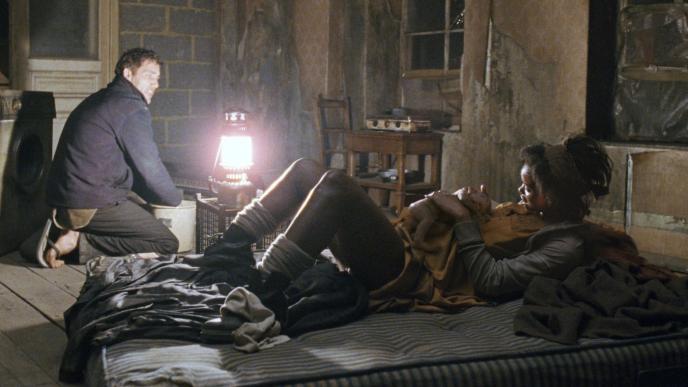
Trust Me, I'm A VFX Supervisor
One of the first things established was Cuarón's faith in the Framestore team. "Alfonso made it clear," says Animation Supervisor, Michael Eames, "That the logistics of the sequence, the 'how', was entirely up to us. That was a great feeling - if a little scary." Eames attended the shoot, alongside Webber and CG Supervisor Andy Kind. Recalls Webber, "The shoot took just one long day to capture. It was quick because we were only shooting two takes, having decided that the best way to get Kee into place for the birth was to join two sequences invisibly when she is briefly off camera. They enter the room and the camera pans back to the doorway as Theo ushers the owner out. When we pan back she is lying on the mattress with her (prosthetic) legs in the delivery position."
In order to give the actors something to work with, as well as with the aim of providing the animators with a starting point, a limbless model baby was constructed, (limbless in order to facilitate its painting out further down the line). Unfortunately, the model proved to be larger than required, which meant further work for the paint and animation teams. With the plates shot, the team returned to Framestore for the long task ahead.
Soon after work had begun on the delivery sequence, Cuarón, in a further vote of confidence in the Framestore team, decided to go back to a number of shots featuring an animatronic baby that are seen later on in the film, and replace the animatronic with the CG version. Altogether, Framestore delivered 32 shots for Children of Men, with 20 of them featuring the baby.
Alfonso really pushes you to get every last element and detail right. Towards the end of the shoot day, he demanded one more take - which turned out to be the one, of course...
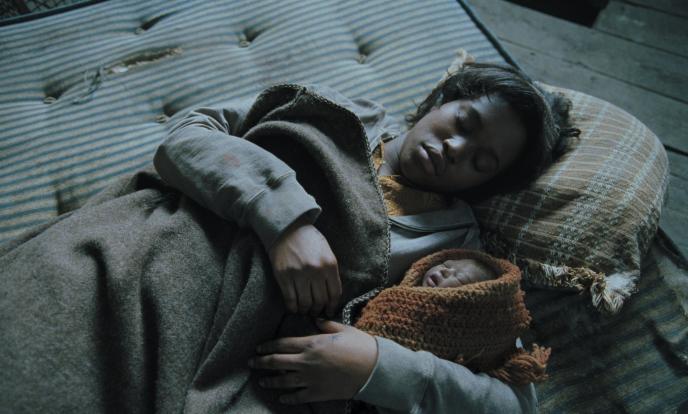
Labour Intensive
The paint team had plenty to occupy them. Alongside the removal of the baby, they had to similarly remove the large cable that supplied the electricity to the 'hurricane lamp'. Not a small task on a normal shot, but this was a handheld 3-½ minute take! Similarly, tracking the sequence was a painstaking and lengthy process.
"We were quite lucky," says Andy Kind, "We had a good few months lead in to the work, for R&D, and we developed the look quite early on. The skin was the biggest single challenge facing us, I think, and we were helped considerably in this respect by a number of good Renderman tools that had just appeared - for example, for some of the subsurface scattering techniques we used."
As far as the animation was concerned, though low-key it had to be pitch perfect. We are so tuned in to the vocabulary of movement in human beings that the slightest 'off' gesture or tic can shatter the illusion. That said, there is also the opportunity for drama to emerge naturally from the scene. "There is often a moment of stillness when a baby emerges," says Michael Eames, "In that second before it draws breath and begins its life outside the womb. It seemed to me that there was a great chance here to add to the suspense. Was it stillborn? With so much at stake, it's a real nail biter of a moment. Of course, in drawing this moment out I actually made (Lead Animator) Craig Bardlsey's job even harder - to make you believe that this was a real baby being held and fractionally moved by Theo, but not give away whether it was alive or dead. Harder than it sounds..."
Once the animation and the look of the skin were right the baby had to be made to sit in the shot and, more specifically, in Theo's hands. This was no mean compositing feat in the changing lighting, and with Theo's hands holding a motionless, larger stand-in. Many layers of lighting tweaks had to be applied; Theo's fingers had to be reanimated in the comp; Kee's dress had to be disturbed by the baby's movement, and so forth. Then came the subtle additions that help to give the shot its believability - a gentle steam rising off the baby, for example, and the drips of fluid falling off it.
The rig and animation were accomplished in Maya, the rendering in Renderman, the tracking in Matchmover and Boujou, the paintwork chiefly in Commotion and the compositing in Shake.



